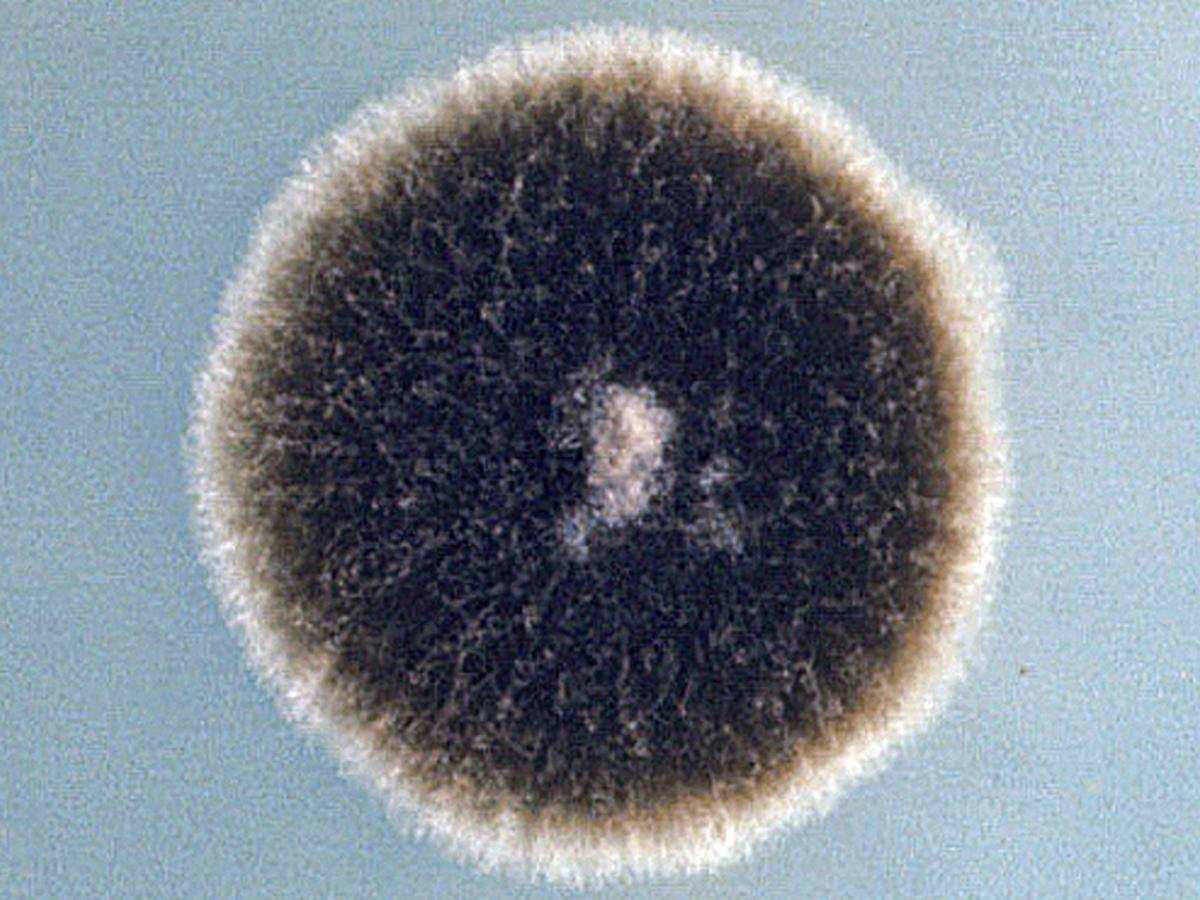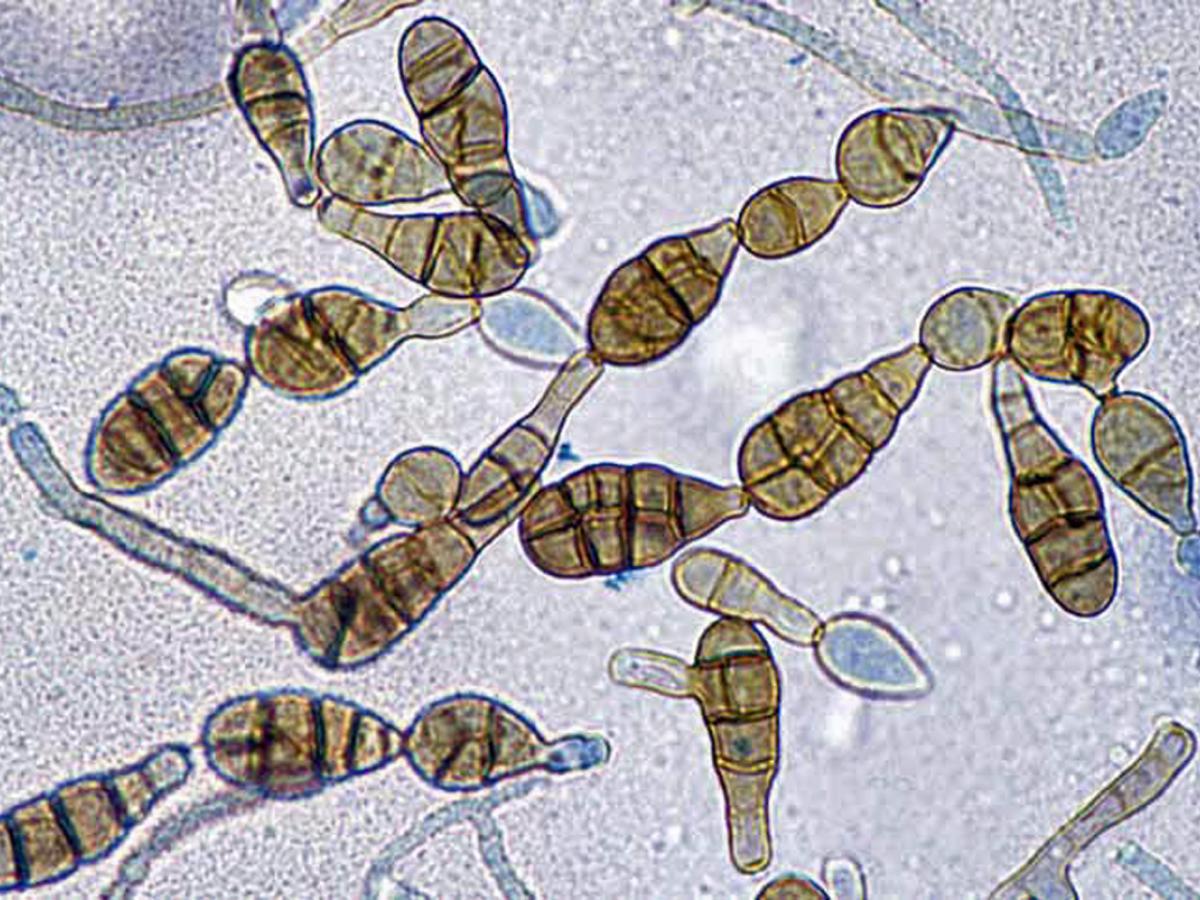Alternaria
A ubiquitous genus containing common saprophytes in soil and air, and plant pathogens.
Alternaria infectoria is the most common clinical species (Pastor and Guarro, 2008). Although usually seen as saprophytic contaminants, Alternaria species in particular A. alternata and A. infectoria are recognised causative agents of subcutaneous phaeohyphomycosis and mycotic keratitis. They are a rare cause of onychomycosis, usually following trauma to the nail.
RG-1 organism.

Alternaria alternata colonies are black to olivaceous-black or greyish, and are suede-like to floccose.
Morphological description:
Colonies are fast growing, black to olivaceous-black or greyish, and are suede-like to floccose. Microscopically, branched acropetal chains (blastocatenate) of multicellular conidia (dictyoconidia) are produced sympodially from simple, sometimes branched, short or elongate conidiophores. Conidia are obclavate, obpyriform, sometimes ovoid or ellipsoidal, often with a short conical or cylindrical beak, pale brown, smooth-walled or verrucose. Temperature: optimum 25-28OC; maximum 31-32OC.
Molecular identification:
Multilocus genotype studies have shown the Alternaria complex currently comprises nine genera and eight Alternaria sections (Woudenbert et al. 2013). ITS sequencing is sufficient for genus and usually species level identification and can clearly differentiate A. alternata and A. infectoria (Pastor and Guarro, 2008). However, it is estimated that >14% of GenBank sequences of Alternaria species are misclassified, so unknown sequences should be compared to those of well characterised reference strains (Woudenberg et al. 2013).

Alternaria alternata showing branched acropetal chains and multicelled, obclavate to obpyriform conidia with short conical beaks.
Comments:
Alternaria species soon lose their ability to sporulate in culture. Potato dextrose agar and cornmeal agar are the most suitable media to use, and incubation under ultra-violet light is recommended to maintain sporulation.
Key features:
Dematiaceous hyphomycete producing chains of darkly pigmented,ovoid to obclavate dictyoconidia, often with short conical or cylindrical beaks.
| Antifungal | No | ≤0.016 | 0.03 | 0.06 | 0.125 | 0.25 | 0.5 | 1 | 2 | 4 | >8 |
|---|---|---|---|---|---|---|---|---|---|---|---|
| AmB | 53 | 4 | 5 | 16 | 21 | 5 | 2 | 8"> | |||
| ISAV | 24 | 1 | 2 | 7 | 11 | 8">3 | |||||
| VORI | 53 | 1 | 6 | 19 | 18 | 9 | 8"> | ||||
| POSA | 50 | 2 | 3 | 11 | 19 | 13 | 1 | 1 | 8"> | ||
| ITRA | 53 | 1 | 1 | 2 | 19 | 26 | 3 | 8">1 |
References:
Simmons (1967, 2007), Ellis (1971), Domsch et al. (2007), Samson et al. (1995), de Hoog et al. (2000, 2015), Pryor and Gilbertson (2000), de Hoog and Horre (2002), Pastor and Guarro (2008), Woudenberg et al. (2013).
